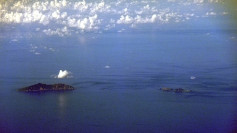Wuhan, the epicenter of the outbreak in December 2019, had more than 6.5 million COVID- 19 tests in the span of nine days. The sweeping mass testing is being conducted to prevent a second wave of the infections after Wuhan has successfully fought its first wave of the outbreak.
The current mass testing was decided upon after six new cases were found this month in the Wuhan. Before this discovery, all cases in the city were among people with travel histories. The moment officials detected a growing number in local transmissions, their next step was the mass testing.
The mass testing was described by local authorities as the "10-day battle." It exceeds all efforts by any country all over the world. As of Tuesday, mass testing has detected more than 200 asymptomatic cases or those who have the virus but are not showing any symptoms.
In the days from May 15 to May 23, China said the mass testing is close to testing 80% of its 11 million people. On Friday, Wuhan had 1.47 million tests in a day compared with the United States' highest daily number of COVID-19 tests of 416,183 in one day. Wuhan started test around 46,000 a day.
To conduct mass testing, medical workers encourage construction workers, market vendors, the elderly, and people with disabilities to undergo testing. Health workers announced in loudspeakers, traveling from one place to another, that undergoing testing is for the people's good.
Those who are willing was given a time slot so people won't flood the testing centers that are located in open spaces. Those who will line up undergo a temperature scan first. People are also required to wear masks and observe strict social distancing. Medical workers on the other hand discard their gloves every after patient.
A few critics of the mass testing campaign said it was excessive, especially that Wuhan's number of infections remained in one digit. Others said it is impossible to attain accurate results with such a number of tests conducted in one day.
Still, however, Wuhan officials cannot be blamed if they are all for mass testing. The virus was believed to have started in the city. Although, Wang Yanyi, the director of the Wuhan Institue of Virology, said that her team found no similar strain of the novel coronavirus to the ones they have in the lab. The lab has three active strains of coronavirus from bats but none of them was the virus that caused the outbreak.
"Our institute first received the clinical sample of unknown pneumonia on December 30 last year ... We didn't have any knowledge before that, nor had we ever encountered, researched, or kept the virus. In fact, like everyone else, we didn't even know the virus existed. How could it have leaked from our lab when we never had it?" she told local media in one interview.






